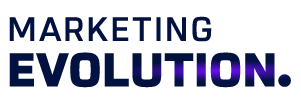Brand Measurement
People-based Brand Tracking & Measurement
There are two key approaches to measuring how your brand is working.
Brand Tracking
Brand Tracking, also known as Brand Monitoring or Brand Dips, is the systematic process of measuring and evaluating how a brand is perceived by its target audience and the wider market. It involves the (ideally, continuous) collection and analysis of data to assess various aspects of a brand’s health, such as brand awareness, sentiment, consideration, and brand loyalty.
Brand tracking helps businesses understand whether they need to invest more in brand (i.e. top-of-funnel) campaigns, or whether those campaigns are working to drive an improvement in the brand KPIs.
Most brand tracking studies are conducted via an online survey, and will include questions to reflect the KPIs that are to be monitored: awareness, recall, preference, consideration etc.
Social listening technologies like Brandwatch can be used for sentiment analysis and social SOV. Search tracking technologies like Pi Datametrics can be used for search SOV. Because search and social can look backwards, they can provide a useful baseline for brand visibility ahead of any survey-based brand tracking.

Typically once you’ve set up ongoing brand tracking, the next step is planning and optimising media campaigns to improve the KPIs and drive direct and indirect sales growth.

Our brand tracking is backed by GWI’s rich, representative audience data in Australia, New Zealand and 50 more countries.
This means we can pre-select respondents based on a range of criteria aligned to the target market, and we don’t have to add questions about demographics, media/social/technology usage, or general attitudes and beliefs. It’s all in the data already.
- Learn about the people that know your brand, are considering your brand, or are loyal to your brand.
- Discover more about the audiences that aren't aware of your brand and find the right channels to reach them
- Make your brand tracking actionable
- Demographics/geography
- Media channels
- Social media platforms
- Interests, hobbies, sports, attitudes etc.
- Food & drink, online activities, purchase habits
With our people-based generative marketing attribution platform from Marketing Evolution, we can then take this brand model further, to understand the brand impact on media and customer journeys, and the media activity’s impact on brand. This helps answer the following business questions:
- What marketing activities stimulate the brand the most?
- Which media impact the brand most efficiently?
- What would it cost to increase brand strength for x% to z% using paid media?
- Measure Marketing’s Direct and Indirect Influence on the Bottom of the Funnel
- What type of product category media investment is most effective in strengthening the brand?
- What is the trade-off cost between short term sales and long-term branding?
- How much short term sales are “sacrificed” if all media investment in the next quarter is planned towards driving maximum brand strength?







